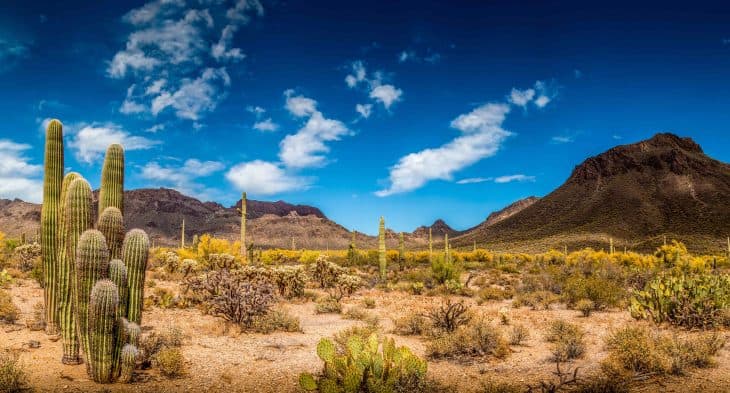
A desert is an area where it scarcely rains. Some are big areas of sand or flat, stony ground, while others have rocky hills and mountains. During the day, the desert’s temperature can be waxing hot, while at the night, it can be freezing cold. They also have strong winds and little rainfall, where only a few animals and plants can survive. Do you want to know how this type of environment works and what’s inside? Read about these 50 adventurous desert facts and learn how to survive if you ever find yourself stranded!
- A desert is a barren and dry area of landscape.
- Deserts have little precipitation.
- Experts acknowledge that a desert is a land that receives less than 25 cm (10 inches) of precipitation a year.
- Living conditions in the desert are hostile to plant and animal life.
- The volume of evaporation in a desert often exceeds its annual rainfall.
- The availability of water in the desert is very low for plants and other organisms to survive.
- Its lack of vegetation displays the unprotected surface of the land to the exposure of underlying strata and rock units.
- Roughly 33% of the land surface on Earth is arid or semi-arid.
- Several polar regions also have little precipitation or much known as polar deserts or “cold deserts.
- Deserts are made by weathering processes as large disparities in temperature between day and night put strains on the rocks.
- The biggest desert in the world is the Antarctic desert. It occupies the continent of Antarctica with a size of around 5.5 million square miles.
- Even though rain is rarely seen in deserts, rainstorms can sometimes occur followed by a deluge.
- The particles from the sand and dust can remain airborne for extended periods, forming sand storms.
- Wind-blown sand grains can scrape or wear the surface of any solid object in their path.
- The sand grains in the desert typically end up piled high in billowing sand dunes.
- Hot rocks in the desert can shatter if the rain hits them.
- Some deserts just look like rocky flatlands, especially when the wind has blown all the sand away.
- Temporary lakes can form in the desert where interior drainage basins are sufficient. They are generally shallow and salty.
- There are 23 deserts in the world.
- The Sahara, Antarctic, Arctic, Gobi, and Namib desert are some of the most famous deserts in the world.
Was this page helpful?
Our commitment to delivering trustworthy and engaging content is at the heart of what we do. Each fact on our site is contributed by real users like you, bringing a wealth of diverse insights and information. To ensure the highest standards of accuracy and reliability, our dedicated editors meticulously review each submission. This process guarantees that the facts we share are not only fascinating but also credible. Trust in our commitment to quality and authenticity as you explore and learn with us.


